
The Vast wild savannah, the power of stormy waterfalls, the dazzling azure of the ocean, the migration of thousands of zebras, the funny tricks of bully elephants, the calm majestic lions, and the majestic, lofty and mysterious Kilimanjaro...
Denis Bogomolov, Candidate of Biological Sciences, field ecologist, specialist in rare species of animals, travel photographer and a keen traveller, told EcoTourism EXPERT about his adventures in Tanzania and the unique nature of this country.
- Please tell us what brought you to Tanzania?
- At the end of 2011, the representatives of the “Vneshobrazovanie” (Teaching abroad) under the then Ministry of Education and Science of the Russian Federation contacted me and offered me a job in my specialty at the University of Dodoma, the political capital of Tanzania. I signed a contract and worked there for about two years from 2012 to 2014, teaching some biological disciplines at the UDOM College of Natural Sciences.
- So, you had enough time to travel a lot around this country?
- Of course, and I travelled around Tanzania not only as a tourist, but also as a field biologist for scientific purposes.
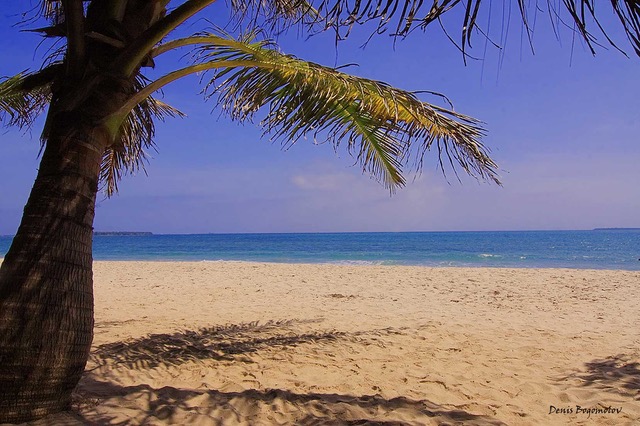
- What is there in this country that can overwhelm an intellectually curious traveller?
- Tanzania has always been famous for its national parks where tourists from all over the world come every year to go on safari and enjoy the stunning wildlife. Local authorities believe that the development of this area is currently almost the only area of the economy that brings sustainable income. Therefore, they are engaged in the preservation of cultural, historical and natural heritage together with a number of international funds.
You should not go to the national parks just without any purpose. You need to go there with a clear purpose, for example, to take pictures of exotic animals or see what a wild nature is. And there is a really wild nature, without any reservations. You are nobody there. No one considers you important. A car is an element of the landscape there, and a person without a car is an easy prey.
The parks have everything required for a comfortable stay. These can be classic campgrounds or tremendously expensive lodges with helipads, the infrastructure is well-maintained.
- What national parks are there in Tanzania, what are their peculiar features?
- There is a variety of national parks, they are completely different. For example, Lake Manyara National Park is an ornithological one. Birdwatchers can go to this park to stay there for months just to enjoy birdwatching - there are a huge number of beautiful birds. The Tarangire National Park has the largest population of elephants in the world. You need to go to Ruaha Park to watch leopards.
Gombe Stream National Park is generally a very specific park, which I, unfortunately, didn’t visit but I really wanted to. The researchers of this park study chimpanzees. The world-famous primatologist Jane Goodall conducted her researches in this park.
The Udzungwa Mountains National Park is a typical tropical rainforest. The Serengeti National Park is the classic East African savannah with acacia woodlands, rocks, swamps, rivers with dams, and the baobab trees, which elephants love to rock and uproot in search of water.
In general, there are a lot of national parks there, but I think that the Serengeti and the Udzungwa Mountains national parks are the most amazing.
- Why are they so good?
- The Greater Serengeti is a whole cross-border agglomeration of parks located on the territory of two countries - Tanzania and Kenya. This is the most famous national park where a huge number of tourists come every year.
They watch the famous “Great Wildebeest Migration” here - the seasonal migration of huge herds of wildebeests and zebras passing across the plains from one part of the national park to another, and crossing the rivers. During the dry season, animals move from north to south, and when a rainy season comes, they migrate north and west.
Just imagine: hundreds of thousands of wildebeests and zebras leave their place actually at once and start moving to cover hundreds of kilometres!
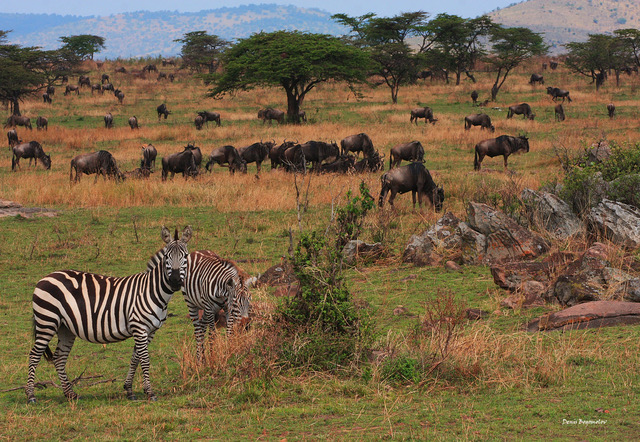
- Probably, it looks epic.
- Sure! The zebras and wildebeests cross various rivers by swimming, throwing themselves into the water from cliffs. And crocodiles are waiting for them in these rivers. That is, people see the very living nature and all the cruelty of this wild world.
And the Serengeti National Park struck me with the fact that this is the only terrestrial ecosystem on the planet that has not been inhabited by people at all, for at least four thousand years. It’s a real pristine savannah where during all this time, there has been no economic activity. In the late 19th and early 20th centuries, the British and Germans wanted to develop this area, but they were afraid. And it was explained by the so-called “lethargus/tsetse-fly disease/ sleeping sickness” that was rampant there for a very long time, and the scientists call it “African human trypanosomiasis”. This is caused by a parasite that, through the bite of a tse-tse fly, can enter the human body and the consequences are very unpleasant, even lethal. And it is called “sleeping” because at the terminal stage of the disease, a person falls asleep quite of a sudden.
But today, the number of tse-tse is very tightly controlled.
- You mentioned the Udzungwa Mountains National Park that also impressed you a lot. What is its attraction?
- This National Park is located south of Dodoma, closer to Mozambique. In the middle of the plain, there is a mountain range, it is about two kilometres above sea level. This mountainous area, surrounded by farmland, is an analogue of an island in the ocean. That is, roughly speaking, it is ‘brewed in its own juice’. And in this small area, various specialists, including entomologists, botanists, herpetologists, and ornithologists find some new species of flora and fauna almost every year, it happens until now.
For example, a few years before our visit, a new species of monkey was discovered in these very mountains - Udzungwa mangabeys (white-eyelid monkeys). These are fairly large monkeys. We wanted to see Udzungwa mangabeys during excursions in the mountains, but we saw a mangabey sitting on a tree right at the entrance to the National Park. The mangabey was chewing some leaf with a very sad expression on the face.
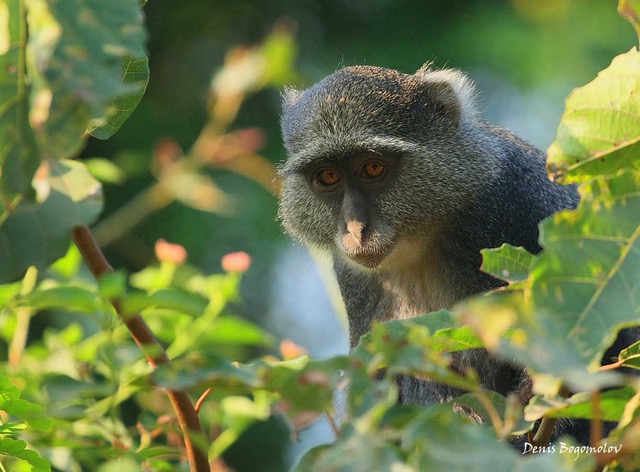
Due to the isolation of the mountainous area, intensive processes of speciation are taking place in this massif, which are based on classical genetic isolation. This is very interesting, since similar processes in nature occur quite rarely and are mainly characteristic of remote oceanic islands that have no connection with the continents. And in the Udzungwa Mountains National Park, such unique conditions have formed in the remote areas of the mainland.
And there is a beautiful cascade of waterfalls in the Udzungwa Mountains National Park.
- What animals can travellers see in the Tanzania’s national parks?
- Tourists usually go there to watch the ‘Big Five’ of Africa: elephant, rhinoceros, lion, buffalo, and leopard. I watched not the ‘Big Five’ but the Big ‘Four and a Half’, I would say, because I watched the rhinoceros from afar through binoculars. In addition, a huge number of many varieties of antelopes, birds, zebras, giraffes, hippos, cheetahs, hyenas, honey badgers, reptiles, including crocodiles, live in the parks. The fauna of Tanzanian national parks is extremely diverse and amazing.
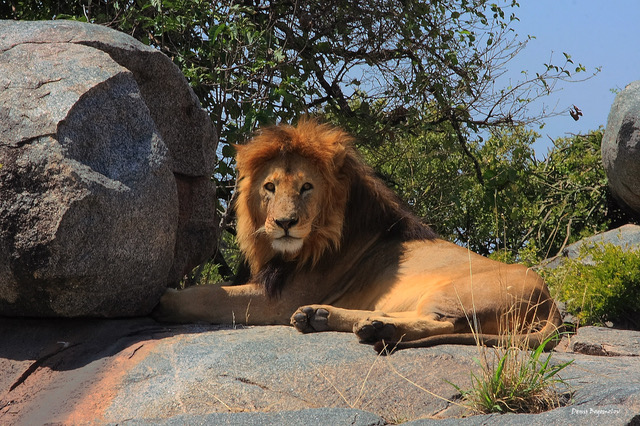
- And how can a tourist survive in all this animal kingdom? Are the national parks safe?
- Any national park in Tanzania has a well-organized, proven infrastructure and stringent rules, including safety regulations. In the national parks like the Serengeti or the Masai Mara ones, walking is prohibited -it is allowed to go only by car and being accompanied by a ranger. And it’s clear why - there are a huge number of predators that can attack tourists. In the Udzungwa Mountains National Park, you can travel on foot, but, again, only with an armed escort.
The safari-mobile is of special design and its roof rises. You can stand up to your full height and take pictures of animals or just watch them. It is strictly forbidden to get out of the car, this is possible only in specially designated locations such as campsites and where your escort allows.
- Have you had any dangerous experiences with the ‘leaders’ of the savanna during a safari tour?
- Of course! For example, during the first trip to the Serengeti National Park. This park is home to a ‘pride’ of so-called ‘mountain’ lions that prefer to rest on rocky outcrops. We arrived at the moment when the alpha male, the leader, was lying on a huge boulder, apparently after a good hunt. The heat was terrible, and from time to time, the lion stood up imposingly, stretched, licked its paws.
Naturally, cars with tourists drove closer to take a picture of the lion from a distance of 30 metres. So, we stood in this line. At the same time, lionesses with cubs were everywhere in the bushes. Realizing that we will be waiting a long time before we get closer to the lion-leader, I asked our guide Deo if I could get on the roof of the car to take pictures. He looked around and said: “You can, just be careful, don’t fall off, otherwise the lion will eat you”. At first, I didn’t understand what he meant. And then Deo shows me over the side of the car, and I understand that I did not notice another lion - an old male. The old lion could have eaten me. The season was dry, the grass was withered, yellow-gray. The lion was lying two metres from the car, completely melting into the landscape, and I didn’t see the animal at all!

I confess that at that moment I felt a sense of ‘injured professional pride’, because in more than 20 years of expedition seasons, I had seen a lot of things, and I had a trained eye for some kind of danger associated with animals. And I failed to see a lion. At the same time, I sincerely admired our ancient ancestors, the first sapiens who walked in this very savannah and survived there without firearms.
- And how did it all end? Did you take a risk?
- Yes, I did, I climbed onto the roof and took pictures very carefully.
In general, there are several cases in the national parks of Tanzania every year when people die precisely from predators because people either do not follow safety precautions or go out somewhere at night, which is strictly prohibited. And above all, it happens due to the attacks of lions and leopards.
But the elephants deserve special mention - in the Ruaha, I witnessed how these animals ‘create a shindy’.
- What have they done?
- Once, we returned back to the camp after the route. We were about five kilometres from our destination when cook Richard contacted us on the radio. He was practically in hysterics and said that elephants had come to our camp.
We drove the car into the campsite and saw Richard trying to drive one elephant away from the food tent using a twig, while the other two elephants were swinging the acacia tree at the same time. According to Richard, these young elephants moved up the bed of the Ruaha River, scared away the local hippos along the way, tried to attack a crocodile but suffered a rebuff, got angry and decided to blow up at people. Elephants burst into the camp and began to wander around it.
Deo pressed the car’s horn, the car rushed forward and stopped a few centimetres from the elephant. After that, the ‘robbers’ decided to move away from the tents, but did not leave the camp. Their attention was drawn to the garbage can at the entrance to the shower room. They even had a fight for the right to get to the garbage first. Thank God, that there was no one in the shower room at that time.
One elephant scattered the content of a garbage can on the ground. Then, the animal found polyethylene in the garbage can and began to eat it. The elephant ‘enjoyed’ some wrapping paper and plastic plates, then threw away the lid off the can and went to catch up with the rest elephants that were already another target - a baobab outside the camp. Three of them uprooted the tree in fifteen minutes. Honestly, I never would have thought that elephants could ‘behave like a pig’.
- When is the best time for travellers to go to Tanzania?
It depends on the goals. If they want to watch animals in the most popular national parks in the northern part of the country - the Serengeti, Ngorongoro, Masai Mara, Tarangire, Manyara national parks, they should do it during the dry season - from August to October. At this time, the grassy vegetation withered, and the animals stay closer to the water bodies and it’s easier to watch them.
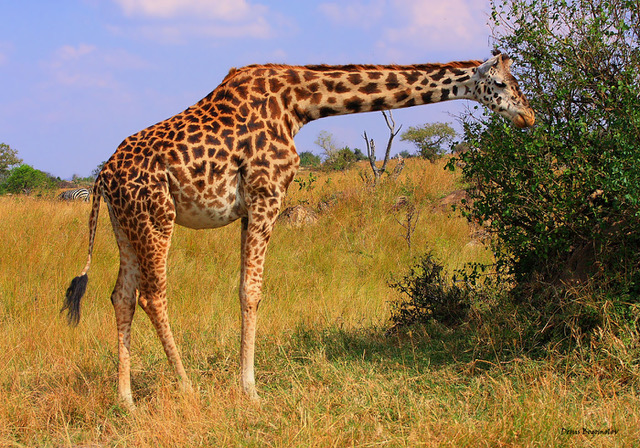
During the rainy season - from November to March - the savannah has gross vegetation. And the yellow burnt grass turns into a beautiful green ‘sea’ for many kilometres. But from the point of view of tourism, the rainy season is the least attractive and favourable time as nothing is seen because of this greenery. So, there is not much to do in the national parks during the wet season.
If we are talking about a beach holiday, the most developed beach infrastructure in Tanzania is located on Zanzibar (EcoTourism EXPERT will talk about this island with Denis another time). Here, travellers can enjoy dazzling white sand and azure sea, as well as those very famous palm trees leaning over the shore, like on postcards. People usually come here from June to October. And on the mainland, there are practically no good beaches.
- What does a classic vacation in Tanzania look like?
- The standard travel tour in Tanzania looks like following - travellers arrive in Dar es Salaam, the largest city of Tanzania, its cultural and economic capital. From Dar es Salaam, they can go to Arusha where 90 percent of all popular safari tours begin. They leave this city for about a week to experience and enjoy safari. They are offered to visit the Serengeti, Ngorongoro, Masai Mara, Tarangire national parks - it’s all practically in one place. The travellers can stay overnight at campsites or, depending on their budget, at good lodges. The man escorting the travellers and a cook are sure to accompany them if the tour is organized by a travel company. The fact is that there are no restaurants within the national parks. For example, tourists who come from South Africa by car bring food with them and cook for themselves in the campgrounds. When tourists come with a cook, the cook stay at the campsites and prepare food so that dinner is on the table when the clients come.

And if travellers stay at a lodge, then there is also a restaurant, and food, water and everything is brought there by helicopters.
After about a week of travelling around the national parks, travellers return to Arusha and fly to Zanzibar, where they spend 5 to 7 days. Well, they go home after that.
From Arusha, tourists can go to Kilimanjaro, one of the Tanzania’s main natural attractions. This is approximately 90 kilometres away. Kilimanjaro, translated from Swahili, means “Glittering Mountain”. This highest stratovolcano in Africa is among the “Seven Greatest Peaks” along with Everest and Elbrus. The Kilimanjaro National Park attracts tourists not only with its stunning natural beauty but also with the opportunity to climb up the mountain. This does not require special climbing training and equipment, but climbing up Kilimanjaro is by no means an easy walk. If travellers decide to conquer Kili, they need to be prepared for everything, including the changeable weather, gusty winds, rain, and lack of oxygen.
- Are there any short safari tours, for example, one day tours?
- Everything depends on the budget. But to get an idea about the classic African fauna, a traveller needs to spend at least three days visiting a national park. This is enough for the vast majority of people, because it is still exotic, which means it is expensive. Flights and the organization of tours are expensive, of course, due to their specifics. Take, for example, the Ruaha National Park. There are much fewer tourists there because it is located in a remote area and not everyone can get there. It takes at least one day to go across the country, and you have to go there at least for a week.

- Why is the Ruaha National Park so remarkable?
This is one of the primeval nature areas and the Park’s landscape is very diverse. In addition, this is actually the junction of two African faunas - the northern and southern ones. There are a lot of leopards, hippos, crocodiles, and a huge number of elephants. You can meet both savannah and forest African elephants there, although a non-expert will not distinguish them. And due to the relatively small number of tourists, the nature in this national park is even more pristine than in the Serengeti National Park.
- How safe is Tanzania for tourists in terms of crimes?
- This country is much safer and cannot be compared with neighbouring Kenya. The local people are extremely friendly. Yes, they are curious, a white person is still some kind of curiosity for the locals but there has never been any aggression. There are no serious problems typical of Kenya where it is better not to leave the hotel in the evening, it is safe in Tanzania and very calm. You just need to follow the elementary safety rules that are typical for any country, including European ones. For example, do not wear a backpack on one strap so that it is not torn off by a motorcyclist passing by. As for medical and hygienic safety, everything is rather safe. Yellow fever vaccination is essential. Of course, there is a danger of malaria, so you need to sleep only under mosquito nets and use repellents. Do not drink tap water.
- Tourists often bring their photographs from their travels to exotic countries in the company of natives adorned with flashy make-up, a lot of necklaces and in grass skirts. Is it possible to visit some very unusual tribe in Tanzania?
- Well, there are groups of tribes in central Tanzania, for example, who communicate with sounds that are very strange and unusual - as if birds are twittering. These Khoisan languages are the most ancient on the planet. And they survived in southern Africa and Tanzania. These languages are among the most complex, and there are several tens of thousands of people speaking these languages. Tourists are taken to such tribes, but these people look quite ordinary - not in feathers, not with a spear, but in trousers and shirts.
But if you go to visit the Maasai tribe, you can see them walking around wearing ‘tonnes’ of beads and bright shepherd’s plaids. And they dress up like this not only for tourists - this is their traditional clothes.
- In Africa, folk arts and crafts are well developed - one of the main sources of income for the local population. Travellers are fond of bringing various bizarre masks and figurines. There is even a special kind of tourists - rarity hunters. What is interesting about Tanzania in this respect?
- The Tanzanians are famous for woodcarving. They are really skilled carvers making all these figurines, masks and stuff. They also have such a concept “ujamaa” (“fraternity” in Swahili) that goes back to about the mid-20th century when Julius Nyerere came to power in the country, proclaiming community socialism in Tanzania. This system was called “ujamaa”. Then the socialist system collapsed but the term “ujamaa” took root, and it was popular in folk arts and crafts, in particular, in very specific wooden sculptures. They look like interweaving interconnected figures clinging to each other. For example, it can be monkeys or little humans symbolizing the community and collectivism.
And the second direction of folk arts and crafts is “tingatinga”. The name comes from the name of Eduardo Tingatinga who painted pictures in a certain style. He painted simple acrylic pictures on the theme “in the animal world”. There is no concept of foreground, middle and background, no midtones. Such naive art, very bright and cheerful. The Tingatinga’s paintings are exhibited, as far as I know, in Europe, they are in private collections and are expensive, they are real works of art and absolutely authentic ones. He has a huge number of followers now, and in Tanzania, those who are not too lazy paint such pictures and sell them.
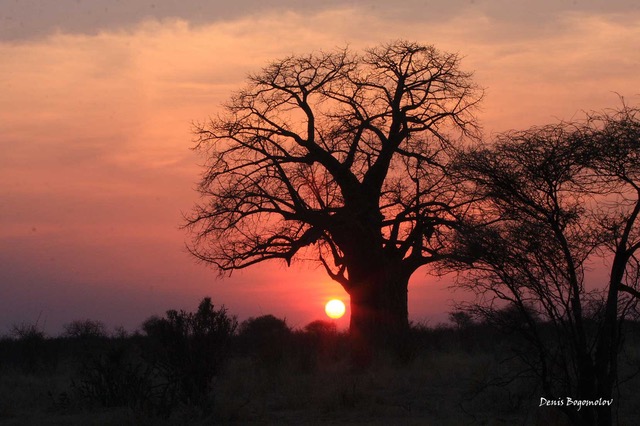
As for the masks, there are a huge number of them - very different, since there are many nationalities in Tanzania and everyone has their own style. As for real masks for rituals, each of them has its own story. They can depict evil or good spirits, guardian spirits, ancestral spirits, they can be masks for burial or for a wedding ceremony. A ritual mask that was used in a particular tribe or village is not available for purchase. Parting with it is like giving away a family icon in the Christian’s mind. This is a community relic - as a rule, it is kept by a shaman, tribal chief or headman. That is, it is very difficult to get a mask, it can be stolen but this is a crime. Such masks are found in antique shops, from private dealers, but they cost huge money - tens, hundreds of thousands of dollars. And they are not displayed in the shops, they are sold only by prior agreement with the buyer.
Travellers can bring very expensive, well-made antique, original masks from Tanzania but in 99 percent of cases it was created by the hands of modern craftsmen and has nothing to do with rituals. This is just a beautiful element of decor, a remake of artistic value.
- What else can travellers bring from Tanzania as a souvenir or a gift?
- One of the main national attractions is tanzanite, a beautiful semi-precious gemstone found only in Tanzania. It can be bought but a permit is required to export it from the country.
Coffee is a national pride except tanzanite. It is in no way inferior to the classic Ethiopian coffee, and sometimes is even tastier. This is a very good product, but it can only be exported with special permission.
In addition, winemaking began to develop in Tanzania since there is a favourable climate, especially in the central part. The Italians are doing this business in Tanzania and they planted vineyards in the country and stared making good wine - both red and white. My colleagues and I visited this wine plantation and tasted their wines. I would like to say that this wine is no worse than the South African ones.
Photo courtesy of Denis Bogomolov
